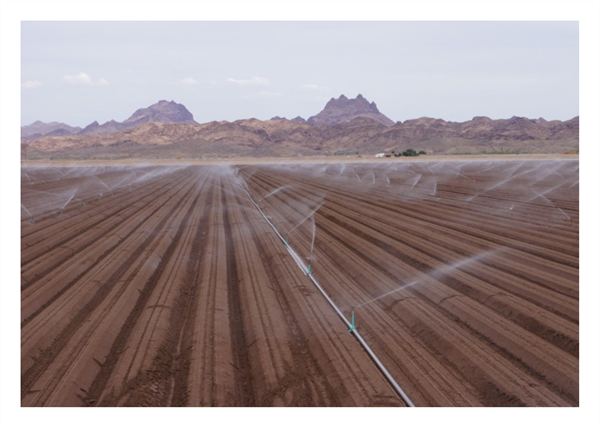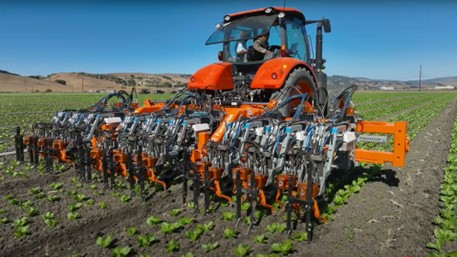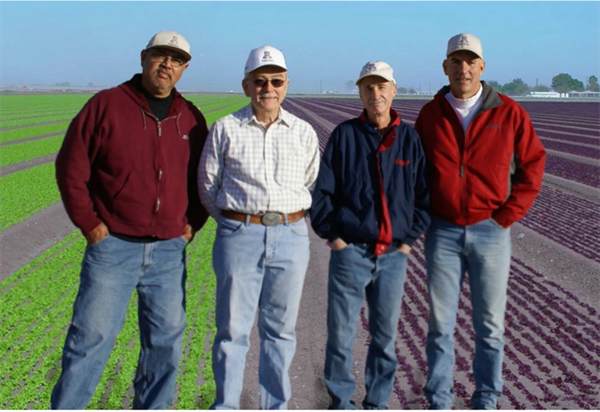Jul 23, 2025
Basic Chile Crop Growth and Development
Chile (Capsicum annuum) is an important crop in the desert Southwest. The Capsicum annuum species is the most common group of chiles that we encounter and these chiles are common in our southwestern diet. The New Mexico type chile (aka, Anaheim) is the most common type of chile crop in the desert Southwest including production ares in southeastern Arizona, southern New Mexico, west Texas, and northern Chihuahua, Mexico.
There are five domesticated species of chile peppers. 1) Capsicum annuum is probably the most common to us and it includes many common varieties such as bell peppers, wax, cayenne, jalapeños, Thai peppers, chiltepin, and all forms of New Mexico chile. 2) Capsicum frutescens includes malagueta, tabasco, piri piri, and Malawian Kambuzi. 3) Capsicum chinense includes what many consider the hottest peppers such as the naga, habanero, Datil, and Scotch bonnet. 4) Capsicum pubescens includes the South American rocoto peppers. 5) Capsicum baccatum includes the South American aji peppers (Guzman and Bosland, 2017). Some examples are shown in Figure 1 and some other chile pepper species as well.

Figure 1. Capsicum annuum pod types include A) Asian, B) Cayenne, C) Chile de Arbol,
D) Chiltepin, E) Hungarian Paprika, F) Jalapeño, G) New Mexican, and H) Poblano. A
Capsicum baccatum pod type is I) Aji. Capsicum chinense pod types are J) Bhut Jolokia,
K) Habanero, and L) Scorpion. A Capsicum pubescens pod type is M) Rocoto and a
Capsicum frutescens pod type is N) Tabasco. Source: Guzman and Bosland, 2017.
Crop Phenology
Understanding of the basic stages of plant growth in relation to time or age (crop phenology) and basic crop needs, i.e., water and nutrients, is an important part of crop management. There is a strong relationship among the phenological, morphological and physiological changes that occur with crop development. Understanding what is going on physiologically within a plant at various stages of growth and development is critical in efficiently managing crop inputs such as water and plant nutrients.
Plants respond to environmental conditions and temperature is the primary developmental force in plant development when water is not limiting. Heat units (HUs) can be used as a good measure of “thermal time” that drives plant development. Thus, HUs can be used as a management tool for predicting and identifying stages of growth and physiological needs. We can then use that information for more efficient timing of irrigation and nutrient inputs to crop and pest management strategies. Figures 2 and 3 describe the basic HU concept with upper and lower thresholds.
Crop phenology models describe how crop growth and development are impacted by weather and climate and provide an effective way to standardize crop growth and development among different years and across many locations (Baskerville and Emin, 1969; Brown, 1989).
People still use days after planting to estimate stages of crop development but HUs are more accurate and reliable. As a result, HU based methods of predicting and tracking crop growth can be more consistently and effectively used in crop production systems.
The use of HU-based phenology models is most applicable in irrigated crop production systems where water is a non-limiting factor. Water stress will alter phenological plant development and it is a major source of variation irrespective of temperature conditions.
Chiles are a warm season, perennial plant with an indeterminant growth habit that we grow and manage as an annual crop. The fruiting cycle begins at the crown stage of growth (Figures 4 and 5) and continues until the plant reaches a point of “cut-out” with a hiatus in blooming as the plant works to mature the chile fruit that the crop has set and established.
Figure 6 describes the basic phenological baseline for New Mexico – type chile and was developed from field studies conducted in New Mexico and Arizona (Silvertooth et al., 2010 and 2011; Soto et al., 2006; and Soto and Silvertooth, 2007).
Heat units accumulated after planting (HUAP) for any date of planting to the present date can be easily accessed in the Arizona Meteorological Network (AZMET) website.
https://azmet.arizona.edu/
In the 2025 season, New Mexico-type chiles in southeastern Arizona experienced a good start to the season after planting. In tracking a set of New Mexico-type chile varieties, their development is tracking very closely to the HU model shown in Figure 6. For example, crown formation and first flowers have been consistently observed at approximately 1,300 – 1,450 HUAP among numerous New Mexico type varieties in southeastern Arizona this season. Many fields are progressing through peak bloom consistent with Figure 6 and early set fruit is maturing nicely as well.

Figure 2. Typical relationship between the rate of plant growth and development and
temperature. Growth and development cease when temperatures decline below the
lower temperature threshold (A) or increase above the upper temperature threshold (C).
Growth and development increases rapidly when temperatures fall between the lower
and upper temperature thresholds (B).

Figure 3. Heat unit calculation with the sine curve method using upper and lower
temperature thresholds (Brown, 1989). The 86/55 ºF thresholds are used, consistent
with most warm season crops.
Figure 4. Photo of a New Mexico chile plant with crown formation and the first fruiting
branch shown withing the red circle.
Figure 5. Photo of a New Mexico chile plant with crown formation and early first fruiting
branch development. Source: Courtesy of Mr. Ed Curry, Pearce, AZ.

Figure 6. Basic phenological guideline for irrigated New Mexico-type chiles.
References
Baskerville, G.L. and P. Emin. 1969. Rapid estimation of heat accumulation from maximum and minimum temperatures. Ecology 50:514-517.
Bosland, P.W., E.J. Votava, and E.M. Votava. 2012. Peppers: Vegetable and spice capsicums. Wallingford, U.K.: CAB Intl.
Brown, P. W. 1989. Heat units. Bull. 8915, Univ. of Arizona Cooperative Extension, College of Ag., Tucson, AZ.
Guzmán, I. and P.W. Bosland. 2017. Sensory properties of chile pepper heat - and its importance to food quality and cultural preference. Appetite, 2017 Oct1;117:186-190. doi: 10.1016/j.appet.2017.06.026.
Silvertooth, J.C., P.W. Brown, and S. Walker. 2010. Crop Growth and Development for Irrigated Chile (Capsicum annuum). University of Arizona Cooperative Extension Bulletin No. AZ 1529
Silvertooth, J.C., P.W. Brown and S. Walker. 2011. Crop Growth and Development for Irrigated Chile (Capsicum annuum). New Mexico Chile Association, Report 32. New Mexico State University, College of Agriculture, Consumer and Environmental Science.
Soto-Ortiz, Roberto, J.C. Silvertooth, and A. Galadima. 2006. Crop Phenology for Irrigated Chiles (Capsicumannuum L.) in Arizona and New Mexico. Vegetable Report, College of Agriculture and Life Sciences Report Series P-144, November, University of Arizona.
Soto-Ortiz, R. and J.C. Silvertooth. 2007. A Crop Phenology Model for Irrigated New Mexico Chile (Capsicum annuum L.) The 2007Vegetable Report. Jan 08:104-122.
 To contact John Palumbo go to: jpalumbo@ag.Arizona.edu
To contact John Palumbo go to: jpalumbo@ag.Arizona.edu












